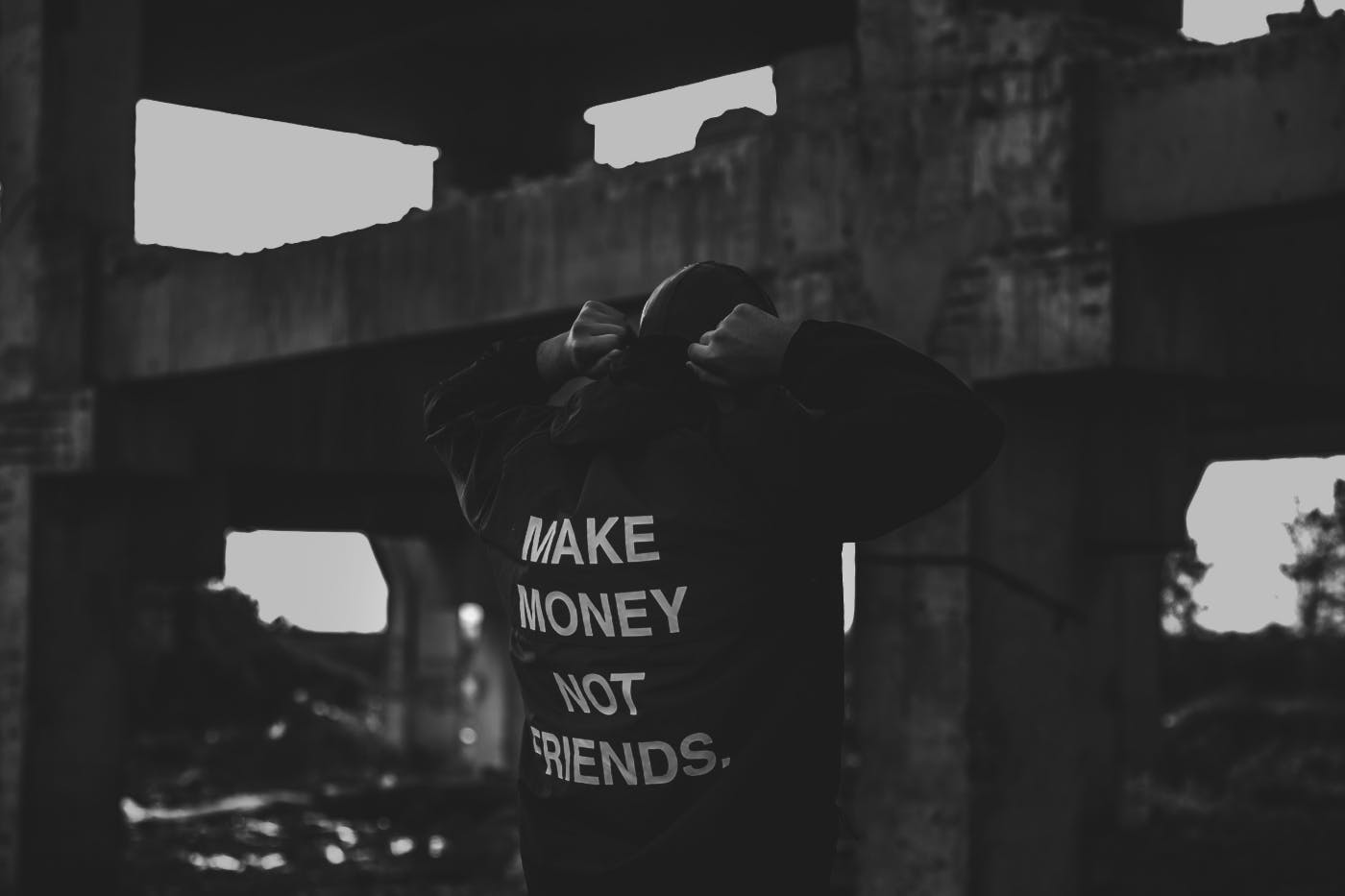

So why are the corporate overlords hiding behind a curtain of sub-brands? Are they embarrassed? Paranoid? Or are they playing 4D chess with the way we experience brands? Spoiler alert: it’s usually the last one.
You love your morning coffee. You can recite the ingredients on your favorite chocolate bar by heart. You probably even have a favorite laundry detergent that makes your towels feel like clouds. But here’s a secret: the companies behind those brands are like ninjas in the corporate world. Dove, Ben & Jerry’s, Lipton—they all march to their own branding drum, yet they’re all part of the same giant army called Unilever.
And they’re not alone. Facebook transformed into Meta and suddenly became something simultaneously cooler, scarier, and more abstract than anyone’s teeny-brained attempt to understand the Metaverse. Kraft Foods, America spells cheese K*R*A*F*T, split off Mondelez to dominate snacks worldwide, leaving the old parent name as something you vaguely remember from the back of a cereal box.
So why are the corporate overlords hiding behind a curtain of sub-brands? Are they embarrassed? Paranoid? Or are they playing 4D chess with the way we experience brands? Spoiler alert: it’s usually the last one.
The Parent-Brand Strategy: Why Big Companies Even Have One
Before we dig into why companies are hiding behind sub-brands, let’s pause and appreciate the parent brand itself. The parent brand is like the Swiss Army knife of corporate identity: it can do a little bit of everything, and it’s usually the thing investors, analysts, and marketing professors love to talk about.
Think of Unilever, Procter & Gamble, or even PepsiCo. These companies exist to coordinate massive portfolios of products, manage supply chains across continents, and keep the financial folks happy. A parent brand gives them:
- Economies of scale: One logistics network, one marketing department, one HR team—spread across dozens of products.<br />
- Investor clarity: Public companies need a clean story for Wall Street. A strong parent brand shows stability and growth potential.<br />
- Corporate muscle: Regulatory approvals, international expansion, and acquisitions all run smoother when you have a recognizable parent entity behind them.<br />
In short, parent brands are like the quiet, responsible adult in the room. They don’t need to throw a wild party to prove they’re cool—they just hold the fort and make sure everyone else doesn’t break anything.
But here’s the twist: the very things that make a parent brand powerful can make it… Kind of boring. Or worse, risky. A PR scandal, a failed product launch, or a misstep in one region can ripple across the entire brand portfolio. And that’s exactly why sub-brands have started to look like the fun, nimble superheroes in the corporate world—able to connect with consumers in ways the parent brand simply can’t.

Case Studies: Masters of the Sub-Brand Disguise
Let’s put theory into action. These companies aren’t just randomly hiding their parent names—they’re doing it with style, precision, and a little bit of corporate mischief.
1. Unilever: The Sub-Brand Orchestra<br />Walk down any grocery aisle and you’ll see Dove, Axe, Ben & Jerry’s, Hellmann’s, and Lipton. Each has its own identity, marketing vibe, and loyal fan base. Dove is about self-care and gentle luxury; Axe is… well, Axe is about teenage confidence and, yes, pheromones.
Yet behind the curtain is Unilever, quietly keeping the lights on, negotiating supplier contracts, and making sure everything ships on time. The genius? Consumers rarely think about the parent company. They feel like they’re choosing individual brands, not pieces of a multinational empire.
2. Meta: A Rebrand to Hide the Elephant in the Room<br /> Remember Facebook’s “good old days”? Neither do we—but the public certainly remembers the privacy scandals, algorithm rage, and endless news feed debates. Enter Meta.
The new parent brand didn’t just give Mark Zuckerberg a cooler logo or a futuristic corporate label—it created distance. Sub-brands like Instagram, WhatsApp, and Oculus get to keep their separate identities, while Meta quietly owns the chaos behind the scenes. It’s like a magician’s assistant: you’re distracted by the flashy performance, never realizing who’s pulling the strings.
3. Mondelez: From Kraft to Snack World Domination<br /> If you grew up eating Kraft Mac & Cheese, the name might evoke nostalgia. But if you’re a global snack aficionado, you probably know Mondelez instead. Why the switch? Kraft spun off its snack division to create a company laser-focused on global treats, including Cadbury, Oreo, Toblerone, and Ritz.
Mondelez doesn’t want you thinking “Kraft” when you’re unwrapping a chocolate bar on a Tuesday night. It wants you to taste joy, nostalgia, and indulgence without the baggage of a massive parent corporation. Meanwhile, the parent company’s business runs smoothly behind the curtain, untarnished by everyday snacking habits.
Why Sub-Brands Are Attractive: The Hidden Power Move
At this point, you might be thinking: “Okay, big companies hide behind sub-brands… but why? Isn’t it more work?” And yes, it is more work—but the payoff is enormous. Sub-brands are basically corporate Swiss Army knives: flexible, precise, and capable of slicing through the clutter of modern consumer perception.
Here’s why companies love them:
1. Consumer Perception: Authenticity Sells<br /> People don’t want to buy from a giant faceless corporation—they want to buy from a brand that gets them. Dove feels like your personal self-care guru. Ben & Jerry’s feels like a socially conscious friend who also happens to make excellent ice cream. The parent company is invisible, and that’s exactly the point. Consumers get the experience without the existential guilt of supporting a multinational.
2. Flexibility & Risk Mitigation: A Safety Net for Scandals<br /> If a parent brand is front-and-center, a single misstep can tank the entire portfolio. Sub-brands allow companies to isolate risk. Facebook had its privacy meltdown, but Instagram and WhatsApp could continue growing with minimal fallout. One messy headline doesn’t ruin the entire empire.
3. Targeted Marketing: Speak to Your People<br /> Sub-brands let companies tailor messaging to very specific audiences. Axe targets teenagers, Dove targets adults worried about skin and self-esteem, and Lipton targets tea enthusiasts. Trying to reach all of them under one corporate banner would be a confusing mess. Sub-brands give clarity, focus, and precision.
4. Experimentation Without Fear<br /> Launching a new product under a sub-brand is like testing a lab experiment in the field. If it fails, nobody blames the parent company. If it succeeds, the brand shines—and the parent company quietly celebrates from the shadows.
5. Cultural & Emotional Relevance<br /> Some sub-brands, especially in food, fashion, or entertainment, can embed themselves into culture more deeply than a parent ever could. Think of Oreo memes, Ben & Jerry’s activist campaigns, or Axe ads that somehow feel edgy instead of corporate. Sub-brands get to play, parent brands mostly watch.

The Trade-Offs: Nothing’s Free in Brandland
As tempting as sub-brands are, they come with a catch. Running a network of independent identities isn’t just a corporate hobby—it’s a strategic balancing act.
1. Brand Recognition vs. Efficiency<br /> The more you hide the parent brand, the less leverage you get from its credibility. Unilever can’t just slap its logo on every product and expect instant trust. Each sub-brand has to earn consumer loyalty from scratch, which can be slow and expensive.
2. Marketing Costs: Multiple Campaigns, Multiple Budgets<br /> Every sub-brand needs its own storytelling, creative campaigns, social media voice, and sometimes even separate websites. You can’t just recycle a single corporate ad across the portfolio—if you do, the sub-brand’s personality disappears. That’s a lot of extra cash and a lot of extra spreadsheets.
3. Internal Complexity<br /> Managing dozens of sub-brands means more internal coordination. Supply chains, product launches, customer service standards—they all multiply. For global giants like Mondelez or Unilever, that’s a logistical puzzle worthy of a TED Talk.
4. Risk of Dilution<br /> If sub-brands become too independent, they can drift away from the parent company’s overarching values or strategy. Axe might go edgy, Dove might get preachy, and suddenly the parent brand’s core identity is like herding cats.
5. The Transparency Paradox<br /> Today’s consumers love authenticity—but they also value honesty. If a scandal breaks and it turns out your “authentic” indie favorite is owned by a mega-corp, some people feel betrayed. Sub-brands can hide the parent, but only up to a point before savvy consumers notice.
In short, sub-brands are powerful—but they’re not magic. They require careful strategy, investment, and ongoing management to work without backfiring.
Strategic Takeaways: Should You Hide the Parent Name?
So, now that we’ve peeked behind the corporate curtain, what can marketers, founders, and brand strategists learn from the big players? Hiding the parent brand isn’t just a stunt—it’s a deliberate strategy, and there’s a method to the madness.
1. Know Your Audience<br /> If your customers care more about experience than pedigree, sub-brands can help you create intimacy. Dove buyers probably don’t care that Unilever is the parent—they care that their skin feels soft and their conscience feels good. On the other hand, B2B buyers, investors, or professional services clients might value the credibility of the parent brand. Audience first.
2. Consider Your Risk Appetite<br /> Sub-brands can isolate risk, but they can also multiply complexity. If your industry is volatile, or your parent brand carries baggage, hiding behind a sub-brand can be a smart hedge. Just be prepared to manage each identity carefully.
3. Tailor Your Messaging<br /> Sub-brands let you speak different languages to different audiences without confusing anyone. Axe can flirt with edginess, Lipton can preach mindfulness, and Ben & Jerry’s can champion activism—all while staying under one corporate roof. Strategy wins when you tailor your voice without losing cohesion.
4. Invest in Storytelling<br /> The more independent a sub-brand, the more it needs its own story. Consumers want narratives, not just logos. The investment is real—but it pays off in loyalty, differentiation, and cultural relevance.
5. Transparency and Trust Matter<br /> Even the best sub-brand strategy can backfire if consumers feel deceived. Be thoughtful about when and how much of the parent company to reveal. Authenticity doesn’t have to mean complete exposure, but it does mean honesty where it counts.
6. Test and Iterate<br /> Sub-brands aren’t set-it-and-forget-it. Companies like Unilever and Mondelez experiment constantly—new flavors, new campaigns, new positioning. Sub-brands are living experiments; your strategy should be flexible enough to adapt as audiences evolve.

Summing Up: The Invisible Hand of Branding
So, what have we learned from the likes of Unilever, Meta, and Mondelez? The brands we love—the ones that feel personal, authentic, and sometimes even rebellious—are often powered by invisible parent companies. And that’s exactly the point. Sub-brands let corporations play both sides of the game: they build consumer intimacy while keeping corporate strategy, risk, and scale firmly under the hood.
Hiding the parent name isn’t about deception; it’s about control. It’s about giving each sub-brand the freedom to speak its own language, connect with its own audience, and experiment without dragging the parent company into every hiccup. Done right, it’s a masterclass in perception, strategy, and adaptability.
At ThoughtLab, we see this strategy play out across industries every day. The smartest companies aren’t just building products—they’re orchestrating ecosystems of brands, identities, and experiences that let each entity shine on its own terms while supporting the bigger picture.
For marketers and brand leaders, the takeaway is simple: think carefully about who you show, how you speak, and which stories you let consumers experience. The parent brand doesn’t always need to be front and center—sometimes, the magic happens in the shadows.
Brands are no longer just what’s on the label—they’re an ecosystem of identities, carefully orchestrated to win loyalty, manage risk, and stay relevant. And if you play your cards right, your sub-brand might just become the star of the show—while the parent quietly smiles from behind the curtain.
